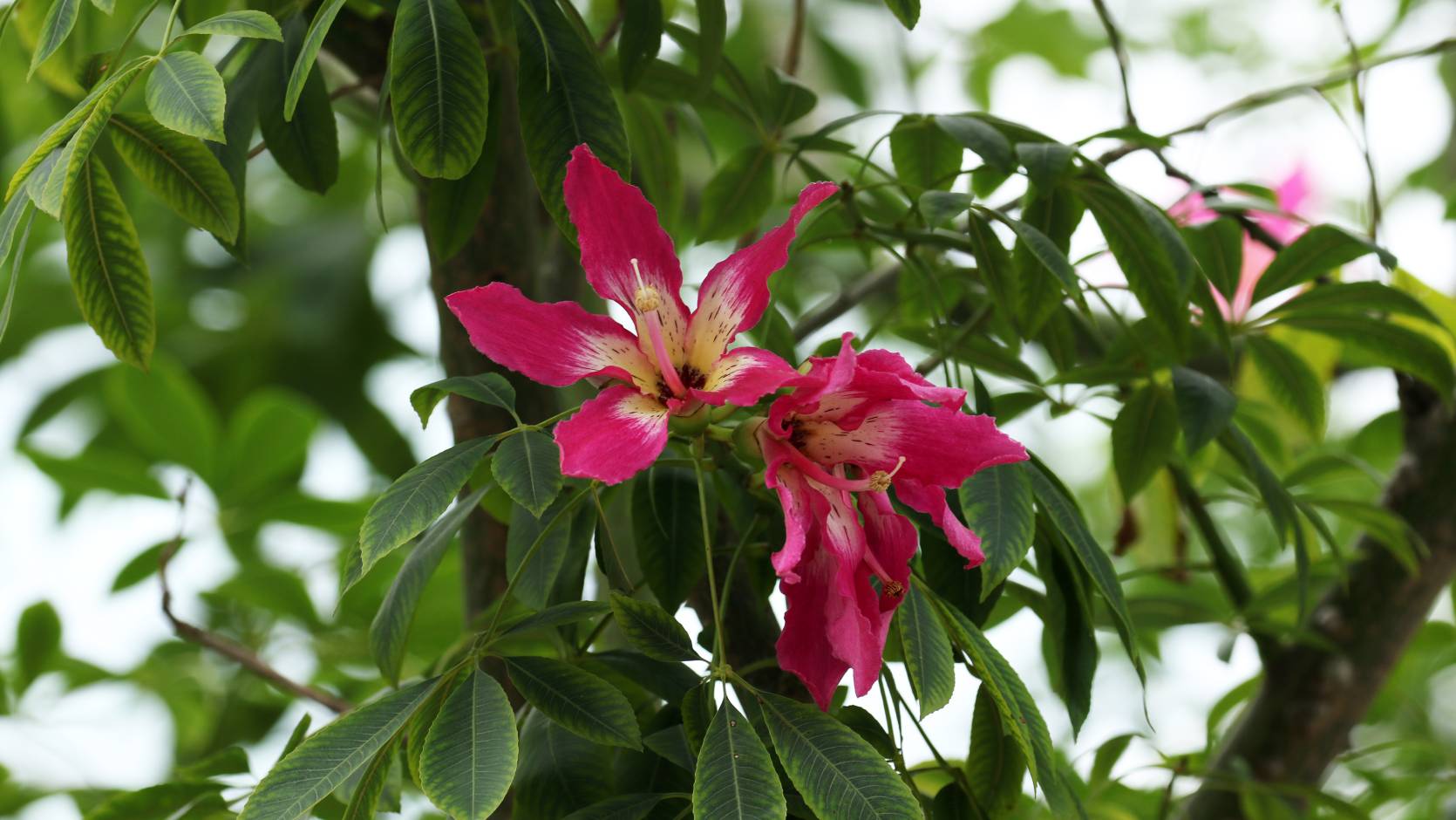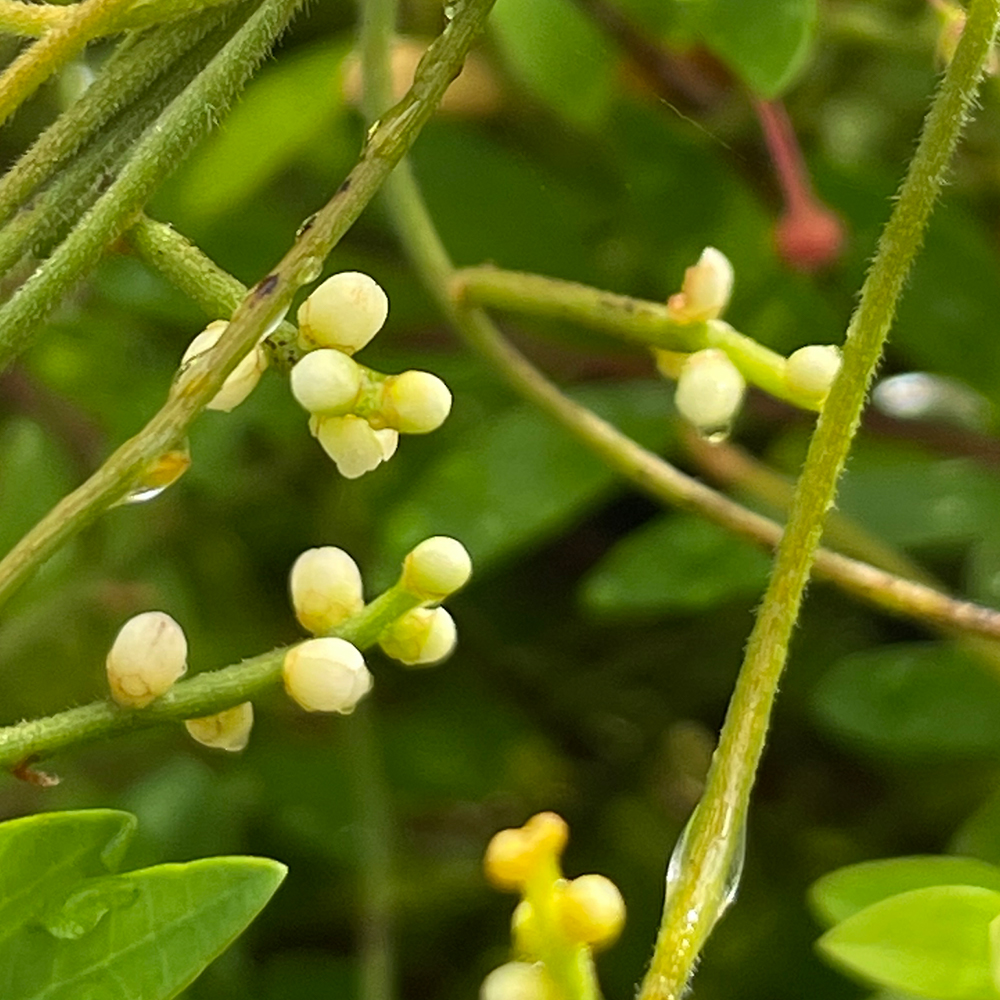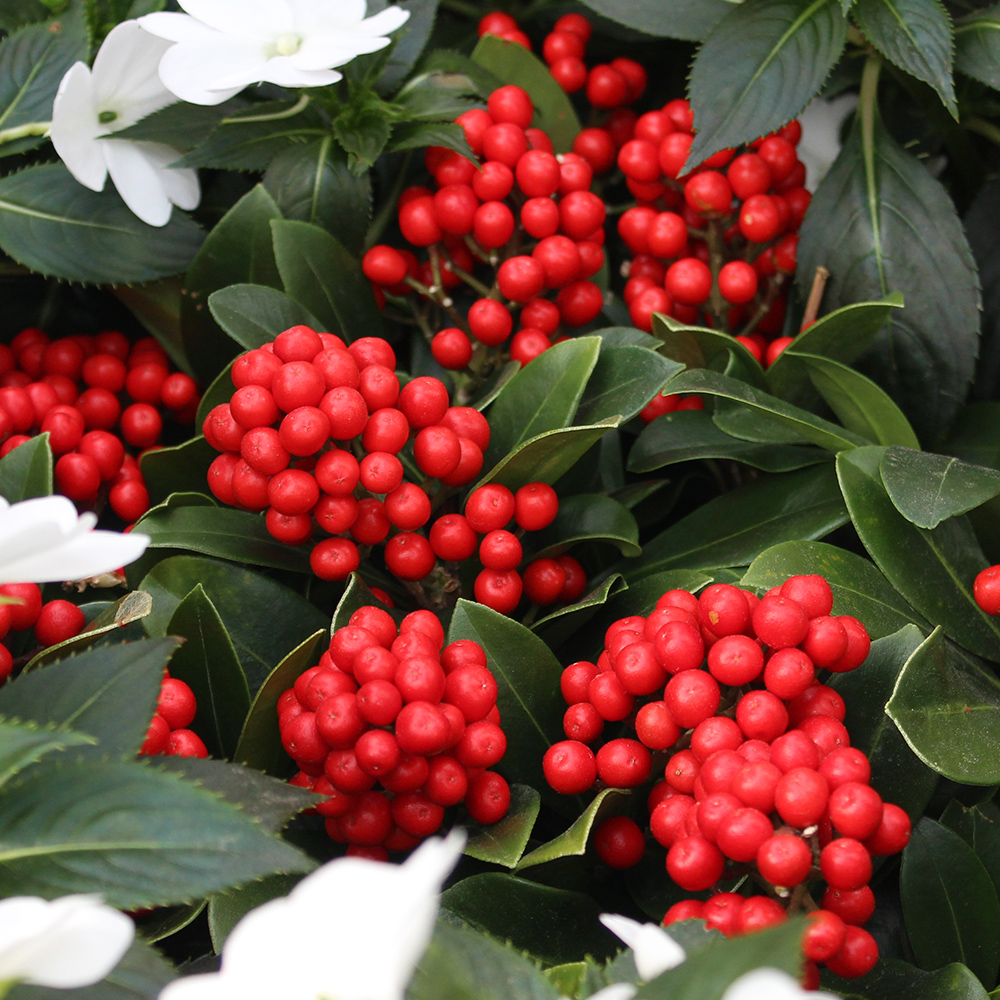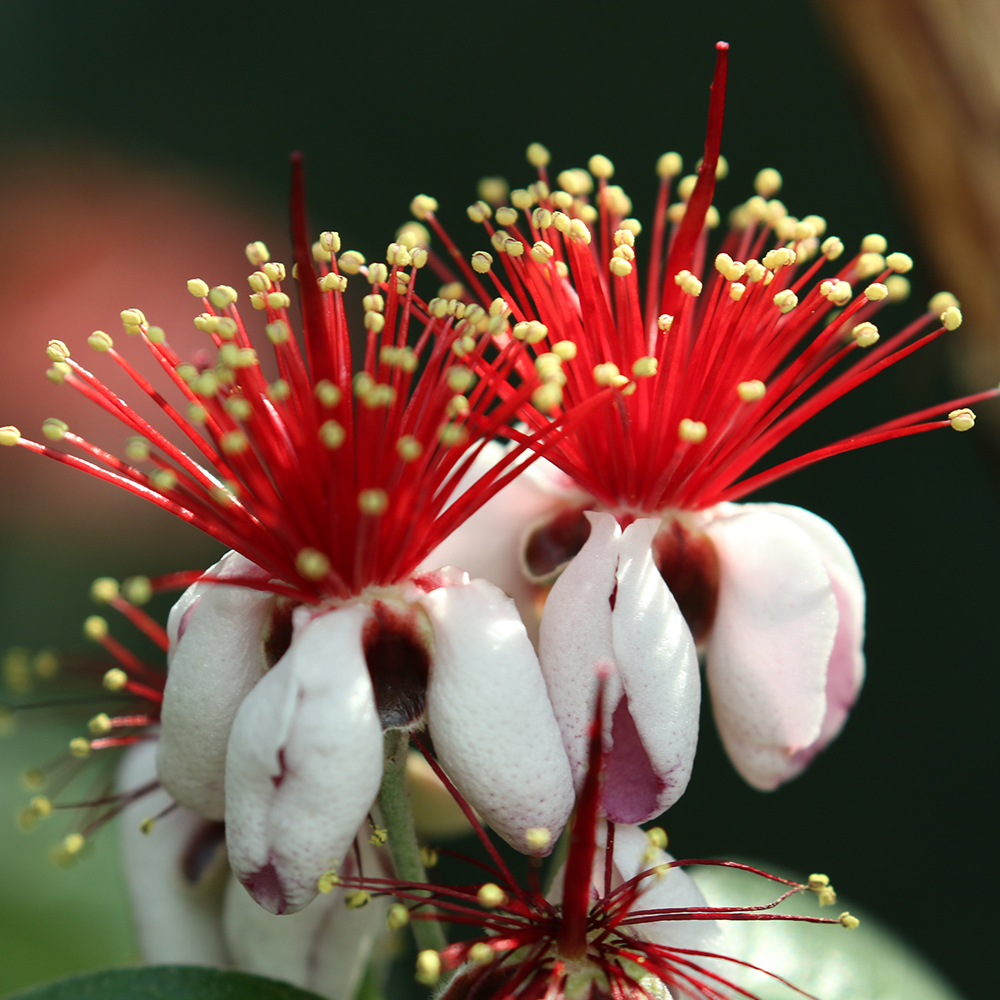Silver Buttonwood (Conocarpus erectus var. sericeus)
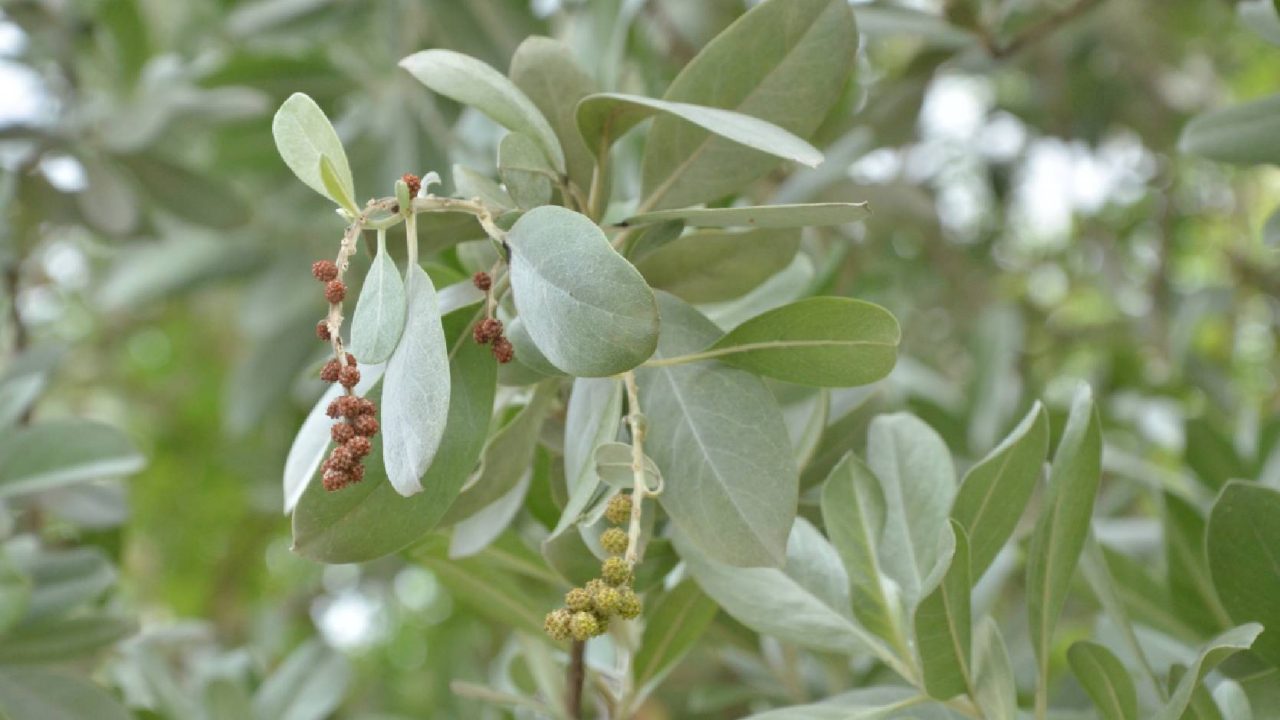
Uncommon in the wild, the silver buttonwood (Conocarpus erectus var. sericeus) is so popular in cultivation for its soothing silvery foliage, that the green-leaved variety of this species (Conocarpus erectus var. erectus) has come to be called 'green buttonwood' to differentiate it from the silver variety! A dense coat of fine white hairs covers both sides of green buttonwood leaves, reflecting the sunlight in a green-gray sheen.
Native to the coasts of tropical America from Florida through the Caribbean and West Indies, this species can form dense, multi-trunked, shrubby thickets or grow as a tree up to 20m in height.
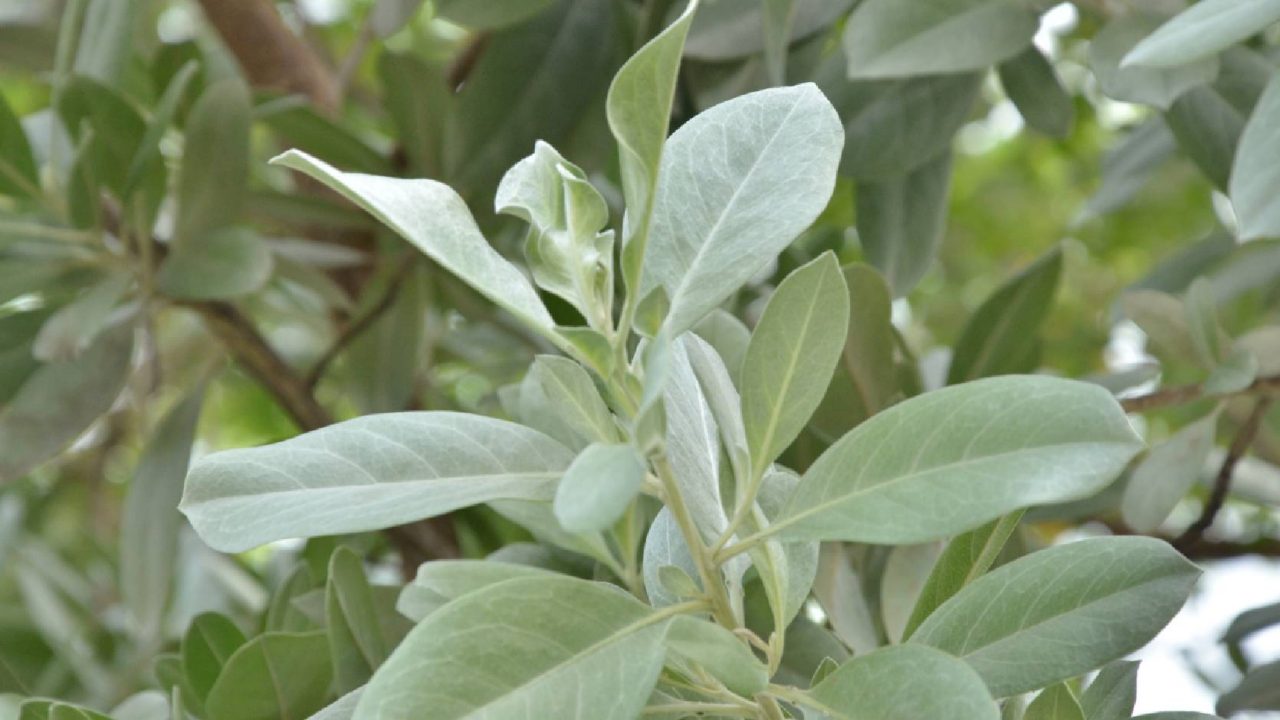 Fine, white hairs on the leaves and young stems reflect light in a silvery glow
Fine, white hairs on the leaves and young stems reflect light in a silvery glow
Native to the coasts of tropical America from Florida through the Caribbean and West Indies, this species can form dense, multi-trunked, shrubby thickets or grow as a tree up to 20m in height.
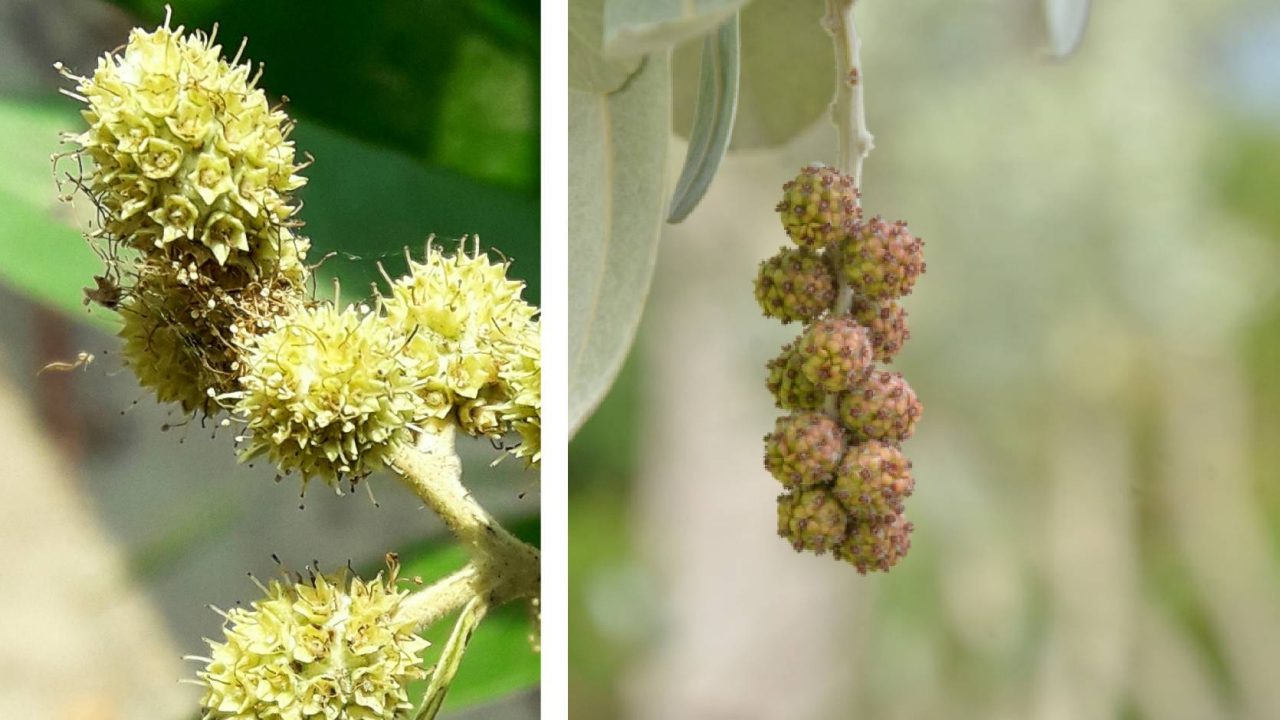 Cone-like flower heads with multiple mini florets (left) & scaly fruits (right).
Cone-like flower heads with multiple mini florets (left) & scaly fruits (right).
Instead, the silver buttonwood has rounded flower heads covered in tiny, whitish florets that are said to smell intensely of artificial grape! Cute as a button, the maroon-tinged, conical, button-like fruit clusters give the genus both their botanical name: Conocarpus means ‘cone-like fruit,’ and their common name of 'buttonwood’.
 Silver buttonwood rings this peaceful plaza in Serene Garden.
Silver buttonwood rings this peaceful plaza in Serene Garden.
Instead, the silver buttonwood has rounded flower heads covered in tiny, whitish florets that are said to smell intensely of artificial grape! Cute as a button, the maroon-tinged, conical, button-like fruit clusters give the genus both their botanical name: Conocarpus means ‘cone-like fruit,’ and their common name of 'buttonwood’.
Come relax with this soothing silvery tree in Serene Garden and Silver Garden!
Written by: Janelle Jung, Senior Researcher (Research and Horticulture)
A transplanted pake (Hawai'i-born Chinese), she's finding her own Singaporean roots. Every plant has a story, and Janelle helps discover and share these with colleagues and guests, hoping to spark a mutual plant passion! Ask her what plant she named her cat after!
